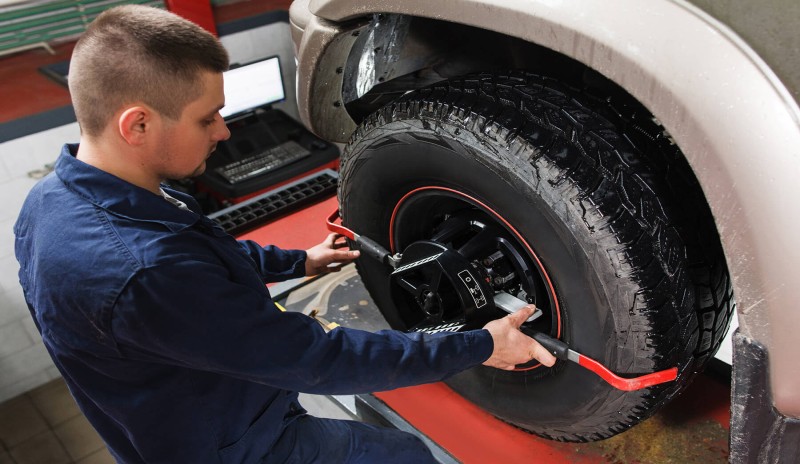Wheel alignment is a procedure to adjust your car’s suspension. The suspension is the system that attaches your wheels to your car. Although the procedure is usually called a wheel or tire alignment, the mechanic performing the procedure doesn’t actually adjust your tires. By adjusting your suspension, though, the mechanic will alter the angle at which your tires contact the road. Why are those angles important?
Do you need a wheel alignment?
If your wheels are misaligned — meaning they meet the road at the wrong angles — you may notice: uneven or unusually quick wear on portions of your tire treads; your vehicle pulling in one direction or the other; your steering wheel doesn’t seem to be aiming straight or isn’t centered when you’re travelling straight; or your steering wheel vibrates as you travel.
If you notice any of those circumstances as you drive, you should take your used car in Calgary to a mechanic to inspect your tires, wheels, suspension and alignment. If your wheels are indeed out of alignment, your mechanic will get things straightened out for you. (At the same time, your mechanic may also check and adjust your wheel balancing. Balancing is related to, but different from, wheel alignment. Balancing refers to the distribution of weight across each wheel/tire combination.)
What do technicians look for when checking your wheel alignment?
Technicians measure and examine three angles when looking at your wheel alignment. Problems with these different measurements will produce different symptoms, but all can be corrected.
Checking your wheels’ camber
Camber is the angle — inward or outward — you see when you look at your tires from the front of your car. Leaning inwards towards the center of your car is referred to as negative camber. Leaning outward away from your car is referred to as positive camber. Some angle is normal. If your ball joints, bearings or other suspension parts are overly worn, your camber may get out of alignment. Camber issues will cause your tire treads to wear out more on one edge or the other than in the middle.
Checking your wheels’ toe
If you imagined that you were hovering above the roof of your car and the hood of your car was transparent, you’d be able to see your vehicle’s “toe.” Your car’s toe is the extent to which your tires point inward or outward. Maybe you’ve heard the phrase “pigeon-toed” applied to children? When applied to kids, “pigeon-toed” means the child’s feet tend to point inwards. A pigeon-toed car is referred to as “toe in.” If the car’s wheel point outwards rather than inwards, the car is referred to as “toe out.” Toe alignment issues will cause feathering on your tires, meaning your tread will be smooth on one side of the tire but still sharp on the other.
Checking your wheels’ caster
Every car has a steering axis. The wheel-tire combination at each corner of your vehicle swivels around that axis whenever you turn your vehicle to left or right. If you imagined a line being drawn between your upper and lower ball joint pivots, that line tends to lean in one direction or another as you turn. The angle of that line is called the wheels’ caster. If the line leans toward the cabin of the vehicle, it’s called a positive caster. If it leans toward the front bumper, it’s called a negative caster. Problems with your caster alignment will affect your stability when you’re travelling in a straight line and can make your steering wheel much harder to turn or make it “shimmy” from side to side. If your caster angles are inconsistent from one side to the next, your vehicle will pull in one direction or the other.
Ensuring that your wheels are properly aligned is essential to the condition of your tires, the reliability of your steering and the safety of your car. If you’re concerned about any symptoms of alignment issues in your car, get in touch with a mechanic that works on and sells certified used cars in Calgary. They’ll be able to help ensure your safety.

